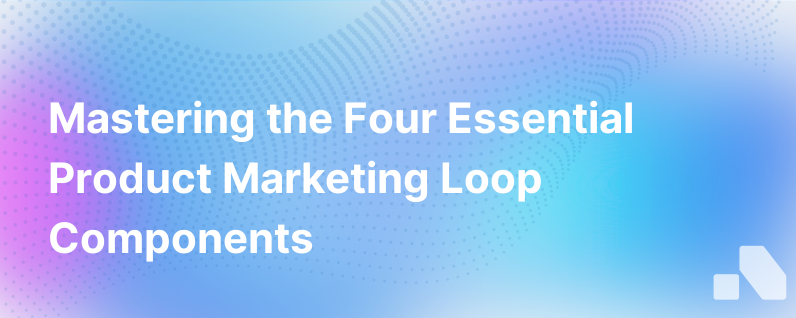
In today's highly competitive market landscape, it's critical to get your marketing game right. Product marketing is a key player in driving customer acquisition, retention, and overall market growth. But, to master it requires a solid understanding of its core components.
Introducing the Product Marketing Loop - a powerful framework that sets the stage for effective product marketing. It's all about presenting your product in a way that resonates with your target buyers' needs, pain points, and aspirations.
The Product Marketing Loop consists of these four vital components:
- Market Research
- Positioning
- Go-To-Market Strategy
- Measurement & Adjustment
Market Research
The first component of the Product Marketing Loop is good old-fashioned market research. It starts with a detailed understanding of your customers, competitors, industry trends, and evolving market landscapes.
Detailing your client persona is a vital part of this stage. To accurately define your customer, you need to answer questions such as: Who are they? What drives their decisions? What are their pain points? The better you know your prospects, the more accurately you can tailor your product and messaging to them.
Competitor analysis is also a fundamental part of market research. A clear understanding of competitor's strengths and weaknesses can help you carve out a unique place in the market.
Positioning
The second component of the Product Marketing Loop, positioning, essentially is all about stating how your product stands out from the rest.
Positioning can be a challenging exercise but is crucial because it defines how your product is perceived by your target customers. It articulates why your product is unique and superior among a sea of options.
Crisply defining your Unique Selling Proposition (USP) and communicating it effectively is essential. It distinguishes your product and the value it offers that others can't match.
Go-To-Market Strategy (GTM)
The third component of the Product Marketing Loop is the Go-to-market strategy, often referred to as GTM. It's the action plan that specifies how you will reach your target customers and achieve competitive advantage.
The GTM strategy should outline your sales and marketing plan, the pricing strategy, and the distribution channels you intend to use. Importantly, it should focus on customer benefits rather than just product features.
Measurement and Adjustment
Last but certainly not least, the fourth component of the Product Marketing Loop is Measurement and Adjustment. This is the step that helps you ensure that your product marketing strategy produces the desired results and that you adjust your approach if it does not.
Key metrics you may want to track include market share, customer acquisition cost (CAC), lifetime value of a customer (LTV), churn rate, and net promoter score (NPS). These will provide you with valuable insights into the effectiveness of your product marketing strategy and where it may need adjustment.
Here's where tools like Aomni come in, offering user-friendly and scalable solutions for measuring and adjusting product marketing strategies in real-time.
Cycle Continuation
The beauty of the Product Marketing Loop is that it's an ongoing process. Once you've gone through all four components, it doesn't end there. You continually loop back to the beginning, revisiting each step, and making adjustments as necessary. This cyclical process ensures you remain responsive to the changing needs of your customers and market dynamics.
Conclusion
Mastering the Product Marketing Loop can empower your company to attract more customers, retain existing ones, and ultimately drive market growth. It’s an essential framework for any company looking to elevate its product marketing.
Each of the four key components—Market Research, Positioning, Go-To-Market Strategy, and Measurement & Adjustment—play vital roles in this loop. They each demand focus and finesse to ensure your product marketing strategy resonates with your customers, stands out amongst competitors, and can adapt to the ever-evolving landscape.
Remember, the most important element of the Product Marketing Loop is its cyclical nature. Achieving success in product marketing doesn't come from a one-time effort. It requires ongoing, iterative adjustments based on careful measurement and evaluation.
When executed efficiently, the Product Marketing Loop can become a cornerstone of your company's growth strategy. And for optimal management of the loop, consider leveraging a solution like Aomni that can simplify and streamline the process, allowing you more time to focus on strategizing and less on data crunching.